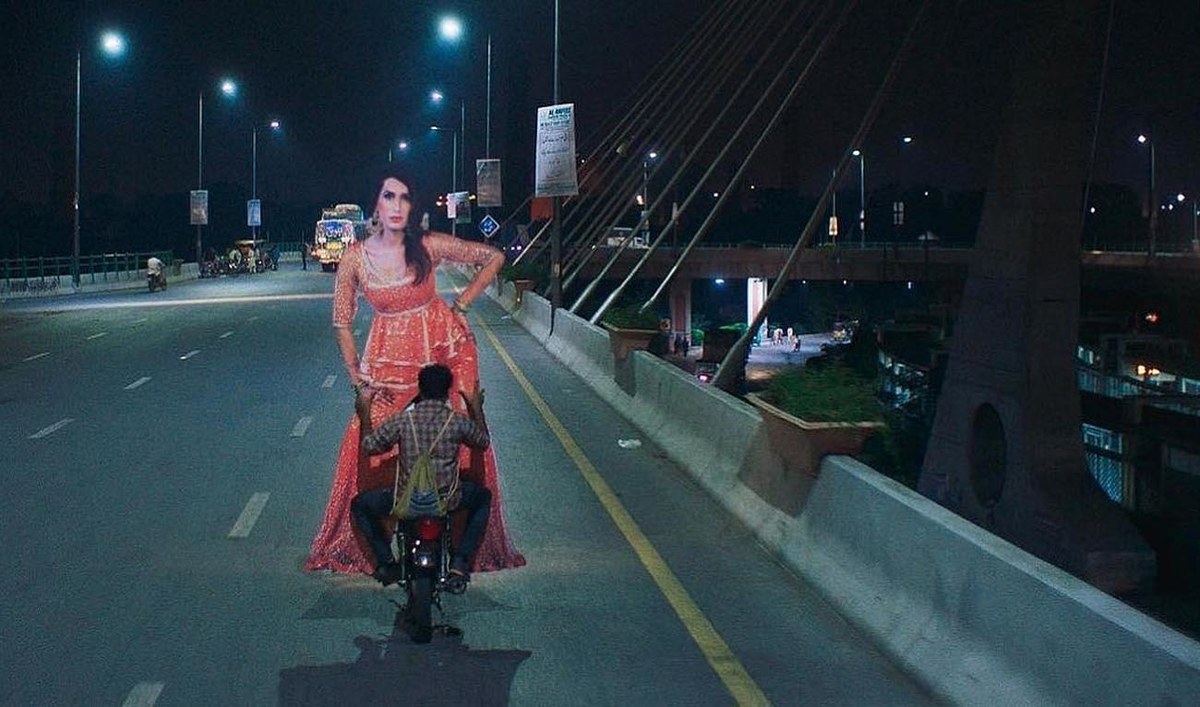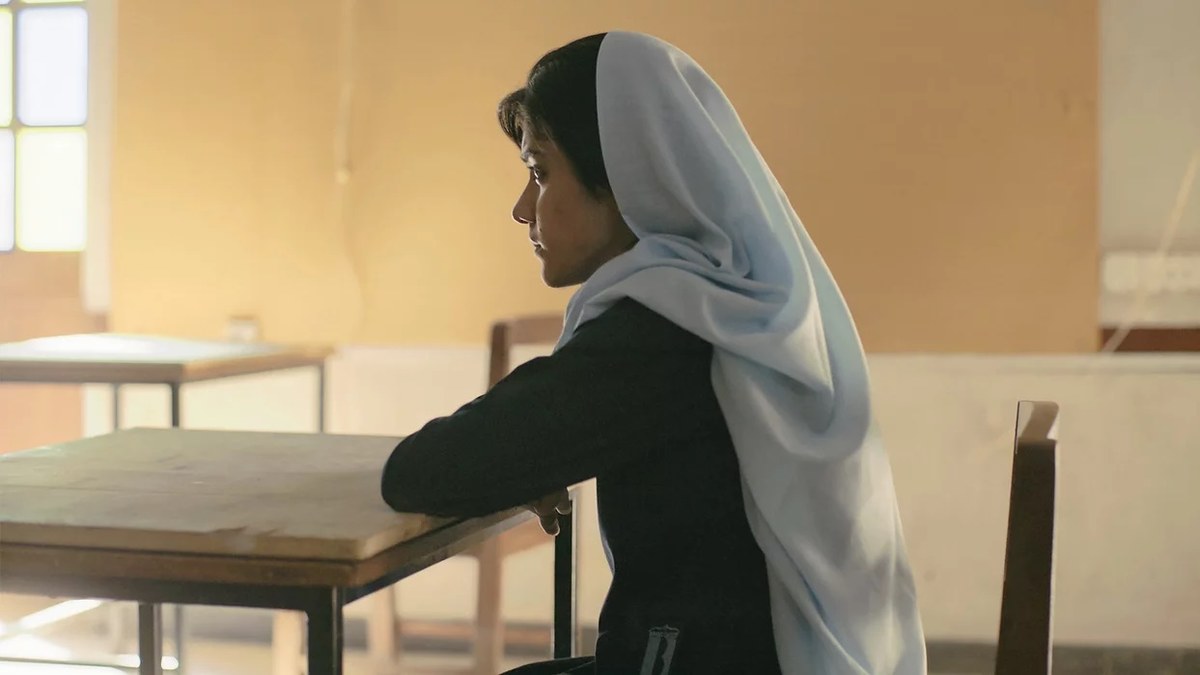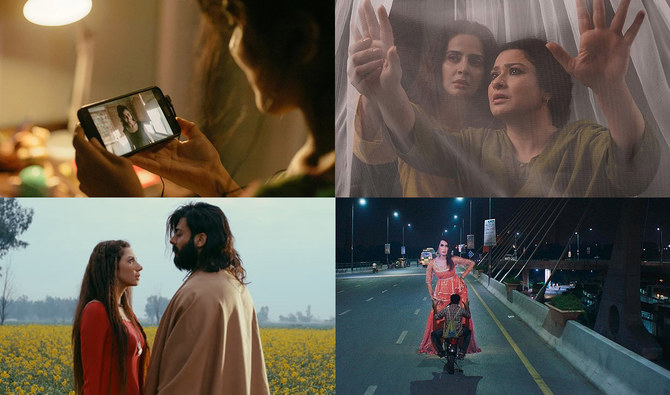KARACHI: The year 2022 was groundbreaking for Pakistani cinema in terms of its representation and recognition abroad.
From Saba Qamar-starrer ‘Kamli’ to ‘Joyland,’ the critically acclaimed Pakistani Oscar entry, to the reboot of ‘Maula Jatt,’ Arab News Pakistan brings you a list of Pakistani films that received international recognition in 2022 for their powerful storylines, brilliant skills of actors and the themes they were centered around.
Kamli

This screengrab, taken on December 14, 2022, from the trailer of the Pakistani movie "Kamli" features actors Sania Saeed (right) and Saba Qamar (left). (Photo courtesy: Khoosat Films)
Sarmad Sultan Khoosat’s film Kamli, which released in cinemas across Pakistan on June 3, is set for its European premiere next month at the 2023 International Film Festival Rotterdam’s (IFFR) the Limelight Programme. Prior to this, the film was screened at the Indus Valley International Film Festival (IVIFF) 2022 in Chandigarh, India.
Saba Qamar, who plays the lead role in Kamli, won the IVIFF 2022 Best Actress trophy for her performance. Kamli revolves around a woman’s struggle between loyalty to long-missing husband and her carnal desires. Besides Qamar, the critically and commercially acclaimed Pakistani movie starred Sania Saeed, Nimra Bucha and debutant Hamza Khawaja.
The film received immense appreciation after its release in Pakistan and had a full-house throughout its run in cinemas across the country.
Speaking of Pakistani cinema getting recognition abroad, Qamar told Arab News in an earlier interview: “Our dramas are popular beyond borders but films like The Legend of Maula Jatt, Kamli and Joyland represent the best of Pakistani cinema abroad.”
Joyland

This image released by Khoosat Films shows a scene from the film "Joyland." (Photo courtesy: Khoosat Films via AP)
Joyland, Pakistan’s official entry for the upcoming Academy Awards, made the most headlines this year. The movie first got critical acclaim in May after it won the Cannes “Queer Palm” prize for the best feminist-themed movie as well as the Jury Prize in the “Un Certain Regard” competition, a segment focusing on young, innovative cinema talent.
Joyland left Cannes audiences slack-jawed and admiring, and got a nearly 10-minute-long standing ovation from the opening night’s crowd.
The movie released across Pakistan, except the Punjab province, on November 18, after much speculation at home. While makers continue to fight for its release in the most populous Pakistani province, the film is headed to Sundance Film Festival 2023 that will take place from January 19 till January 29.
Besides, Joyland also screened at the Indian Film Festival of Melbourne, where it won the ‘Best Film’ from the subcontinent for 2022. Among other international festivals, the movie had its North American premiere at the Toronto International Film Festival earlier this year.
The Legend of Maula Jatt

This handout picture shows the movie poster of Pakistan's Punjabi film "The Legend of Maula Jatt" released in October 2022. (Photo courtesy: Online)
Bilal Lashari’s long-awaited cinematic outing, The Legend of Maula Jatt broke all previous box office records for any Pakistani movie, not just at home but across the globe. Besides Pakistan, the film released in the Middle East, the United States, Canada, Europe, Australia and New Zealand.
A reboot of the 1979 cult classic, Maula Jatt, the Punjabi action film starred Fawad Khan, Mahira Khan and Hamza Ali Abbasi in key roles. Touted as the most expensive film in Pakistan’s history, the film crossed the budget of almost 50 crores ($2.2 million), including marketing and advertising, according to the film’s distributor Nadeem Mandviwalla.
The film’s plot revolves around Maula Jatt, a fierce prizefighter with a tortured past who seeks vengeance against his arch nemesis, Noori Natt, considered the most feared warrior in Punjab.
According to official numbers, the film crossed the figure of 200 crores ($8.8 million) worldwide, while it crossed 95 crores ($4.2 million) in Pakistan as of December 19.
Sandstorm

This still from the Pakistani short film Sandstorm, released in September 2021, shows the protagonist Zara sitting in an empty classroom. (Photo courtesy: YouTube/Seemab Gul)
Pakistan director Seemab Gul’s short film, Sandstorm won big at Oscar-qualifying festivals, HollyShorts and the Flickers Rhode Island International Film Festival (RIIFF) 2022. Sandstorm emerged as one of the top three winners at HollyShorts 2022, while it won the Best Live Action title at RIIFF 2022.
The short film had its world premiere at the 78th edition of the Venice Film Festival in September 2021. Since then, it has made it to nearly 50 festivals worldwide, including the prestigious Sundance Film Festival and Ischia Film Festival (IFF) in 2022, where it bagged three trophies.
Written and directed by London-based filmmaker Gul, Sandstorm revolves around a schoolgirl in Pakistan’s southern port city of Karachi, who shares a dance video with a boy she meets online. The story takes a sinister turn, when the boy blackmails her with the video.
“It is wonderful to represent Pakistan and most importantly, a female story from the female perspective, which is actually rare in the mainstream industry,” Gul told Arab News in an interview in August.
The filmmaker is now eyeing the Oscars’ shortlist, for which only 10 films will be selected by the end of January. Out of these 10, only five are nominated for the award.

















